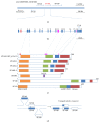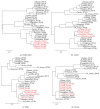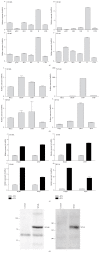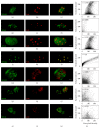SP140L, an Evolutionarily Recent Member of the SP100 Family, Is an Autoantigen in Primary Biliary Cirrhosis
- PMID: 26347895
- PMCID: PMC4548144
- DOI: 10.1155/2015/526518
SP140L, an Evolutionarily Recent Member of the SP100 Family, Is an Autoantigen in Primary Biliary Cirrhosis
Abstract
The SP100 family members comprise a set of closely related genes on chromosome 2q37.1. The widely expressed SP100 and the leukocyte-specific proteins SP110 and SP140 have been associated with transcriptional regulation and various human diseases. Here, we have characterized the SP100 family member SP140L. The genome sequence analysis showed the formation of SP140L gene through rearrangements of the two neighboring genes, SP100 and SP140, during the evolution of higher primates. The SP140L expression is interferon-inducible with high transcript levels in B cells and other peripheral blood mononuclear cells. Subcellularly, SP140L colocalizes with SP100 and SP140 in nuclear structures that are devoid of SP110, PML, or p300 proteins. Similarly to SP100 and SP140 protein, we detected serum autoantibodies to SP140L in patients with primary biliary cirrhosis using luciferase immunoprecipitation system and immunoblotting assays. In conclusion, our results show that SP140L is phylogenetically recent member of SP100 proteins and acts as an autoantigen in primary biliary cirrhosis patients.
Figures









References
-
- Szostecki C., Guldner H. H., Netter H. J., Will H. Isolation and characterization of cDNA encoding a human nuclear antigen predominantly recognized by autoantibodies from patients with primary biliary cirrhosis. The Journal of Immunology. 1990;145(12):4338–4347. - PubMed
Publication types
MeSH terms
Substances
Grants and funding
LinkOut - more resources
Full Text Sources
Other Literature Sources
Molecular Biology Databases
Miscellaneous

